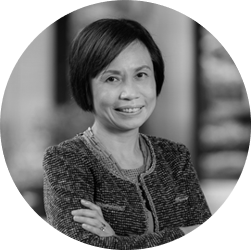Decision Time for APAC Pharma: Step Up or Sit Back?
When I talk to my peers in the pharmaceutical industry, we all agree on one thing: the last decade has been a time of extraordinary achievement for the industry in Asia-Pacific.
Janssen alone has delivered hundreds of innovative medicines to address the unmet needs of patients living with serious diseases in Asia-Pacific. In 2019, our innovative medicines will transform the lives of more patients than ever before; I don’t think there’s any measure of success that could make me prouder.
But to truly understand the advances of the last decade, we need to look beyond the numbers, to real people, living real lives. Those of us who remember the initial, terrifying HIV epidemic of the 1980s can only now marvel at the impact of highly active antiretroviral treatments, which have delivered dramatic declines in HIV mortality and infection rates across the region. Similarly, in hepatitis C we’re now seeing cure rates as high as 95 percent in countries like Japan, where interferon-free direct antivirals are widely available – and with none of the terrible side-effects of older, less effective treatments.
In cancer, perhaps the most feared diagnosis for patients and families, the story’s the same. For years our ambition was to transform cancer into a chronic disease, to be managed over time. Now, we can finally talk meaningfully of cure – and in some cancers, in some patients, we’re already there.
And it’s not only about what we can cure – we’ve also made great strides in what we can prevent. Australia, an early adopter of the HPV vaccine, is on course to eliminate cervical cancer caused by the HPV virus by 2028, a remarkable achievement, while in China childhood vaccination against hepatitis B has seen infection rates plummet by over 90 percent.
By any measure, the last ten years have brought unprecedented success, and the pharmaceutical industry in Asia-Pacific now faces a choice – rest on our laurels or push on to even greater achievement. For us at Janssen, that is no choice at all: we remain focused on our long-term goal of creating a world without disease. So, what do the next ten years hold?
Certainly, it will be a period of rapid change, with challenges and opportunities very different to those of the past. Our populations are ageing. Chronic, multi-factorial non-communicative diseases are on the rise. Across the region, a burgeoning middle-class is demanding access to the latest treatments, which these days are rarely small molecule medicines delivered in a bottle. Rather, they are complex biologics or cell therapies that are difficult – and expensive – to discover and develop. It’s not enough to innovate – we must also ensure patients have access to the benefits that innovation brings.
So how do we respond to these challenges?
First, with humility. We must accept that we cannot do it alone. At Janssen, we actively pursue collaborations with the brightest and best – anyone who can help us take the next step towards a future where disease is a thing of the past. This year, we opened the first Asia-Pacific JLABS (Johnson & Johnson’s life science incubator) in Shanghai, providing collaborative space for around 50 biotechnology and medical device start-ups, all searching for the next innovation. Equally important are our partners in academia and more established healthcare companies, such as China’s Legend Biotech, with whom we are developing the exciting CAR-T immunotherapy for multiple myeloma.
Secondly, with ambition. The region is entering a period of rapid change, spearheaded by China which is moving from a self-pay to a reimbursed system, making modern medicine available to millions for the first time. If we can safely meet this demand, we will transform vast numbers of lives in a short space of time.
In other areas of the region, however, the pace of change is slower, and so we must continue to make our case – respectfully, determinedly – that health is an investment, not a cost. To truly unlock our potential, we need to work with all stakeholders to bring maturity to our reimbursement environments, so that all patients in Asia-Pacific have timely and affordable access to innovative medicines. And we need to work with the region’s regulatory bodies to ensure approval timelines are as short as possible, with zero gap with the US and EU.
Finally, with compassion. In the words of our founder Dr Paul Janssen, ‘patients are waiting’, and in the midst of all this change, we must never forget to place our most important stakeholder at the centre of all we do. This is particularly true in complex conditions like cancer, which increasingly require individualized approaches. After all, by 2030 most new cancer patients will be living in Asia.
Placing the patient at the centre means listening to – and addressing – their concerns and needs. It means bringing the patient voice into the decision-making process at all levels, so that real patients – and not only advocacy groups – are involved in discussions on preferred method of administration, trial design and reimbursement. It also means, in these days of precision medicine, AI, genomics, big data and health robots, ensuring that the patient is always at the heart of a connected, integrated system of data, technology and healthcare workers. We must never forget to treat the patient and not merely the disease.
In short, there’s a lot to feel optimistic about. And yes, while it’s true my industry has had a stellar last ten years, I’m convinced we can do better in the next.



